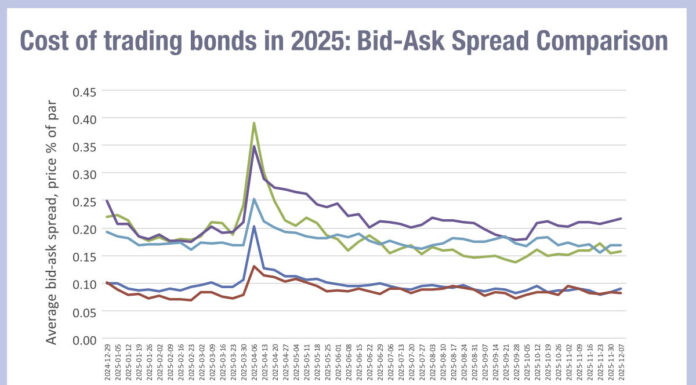Fixed income markets are complex and esoteric compared with equities.
Retail market participants are more interested in bonds than they had been for years, given that risk-free rates are above 4 percent.
The seemingly obvious way to connect the dots between the two statements, and open the retail floodgates, is education.
But it’s not that simple, according to speakers on a Wednesday afternoon panel at the Fixed Income Leaders Summit in Washington, DC.
While education is a building block toward bringing more retail flows into government, corporate and municipal bond markets, panelist said even educated, successful non-financial professionals mostly care only about top-line yields and have little understanding – and importantly, desire to understand – convexity, duration, risk, or other bond characteristics.
“Financial literacy just isn’t there on the retail side,” said Narwhal Capital Management CIO Ben Nye, who cited a client who recently was surprised he received a tax bill for holding $600,000 in CDs.

“Retail doesn’t understand fixed income,” even when provided with educational resources, said Steve Chylinski, Head of Fixed Income Trading at Eagle Asset Management. “We train our advisors to educate clients, but they’ll never really understand it, so it becomes a matter of trust … A combination of education and trust.”
Education is useful in some contexts — for example, it can be explained that a zero-coupon bond might be a better investment than a money market fund, despite the latter’s tangible income stream of monthly interest payments. But education is less likely to help a retail investor grasp the nuances of the yield curve and its investment implications.

Nye’s firm manages retail bond portfolios as small as $10,000 to $25,000. Advisors aim to educate clients about what they own, while communicating in straightforward, understandable language and focusing on core components such as the total-return split between income and price. Client service “starts on the educational side, and then our technology helps to support that,” Nye said.
In a preceding FILS panel about separately managed accounts, which are held by some retail investors, it was noted that robust growth in SMAs has been primarily driven by fixed income being back in vogue given yield levels. Layered on top of that is the SMA industry worked for years when yields were low to reduce complexity and boost efficiency and scalability of the investment vehicles, so investors drawn by today’s juicier yields are also finding an improved user experience.
©Markets Media Europe 2025












